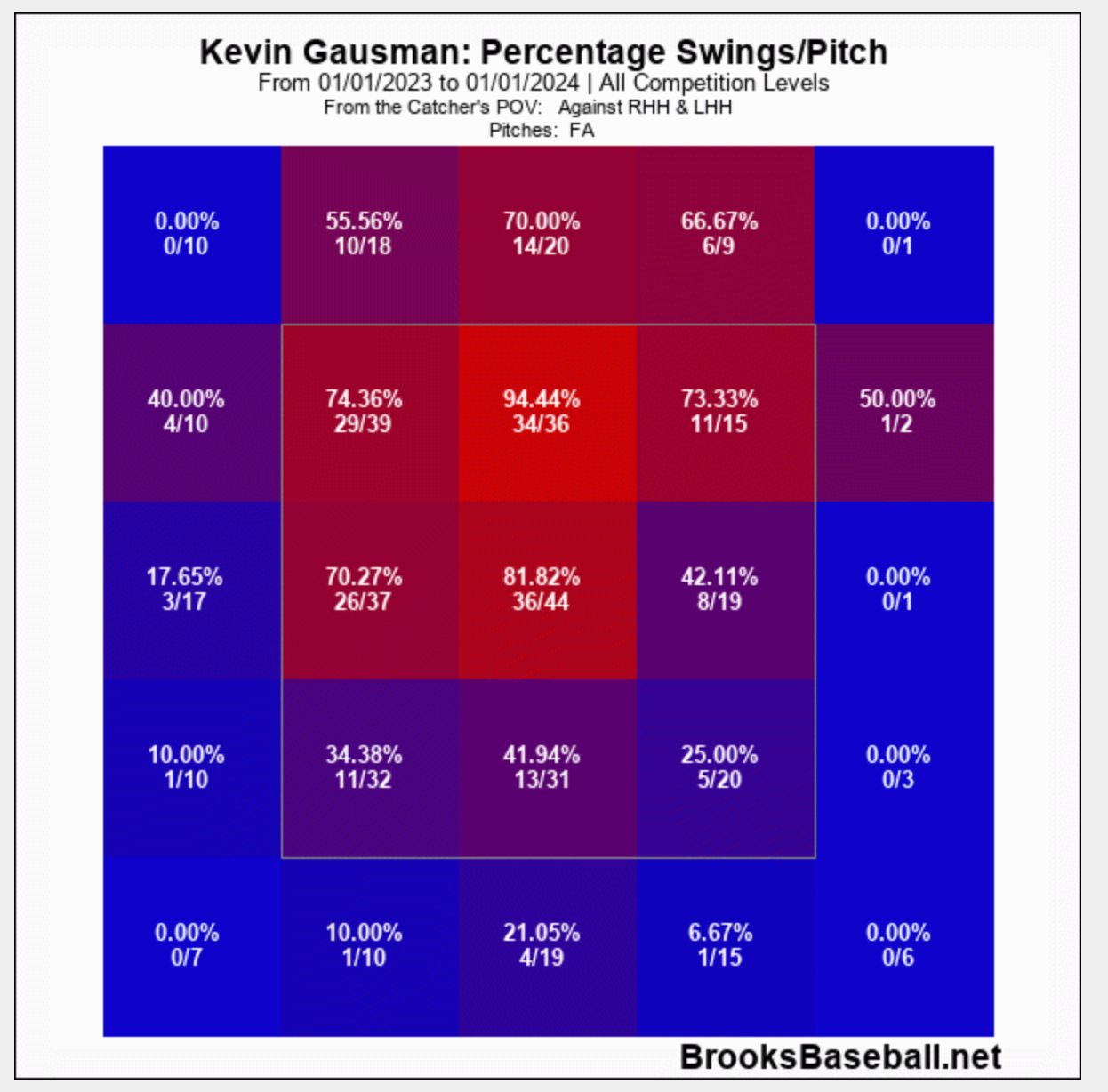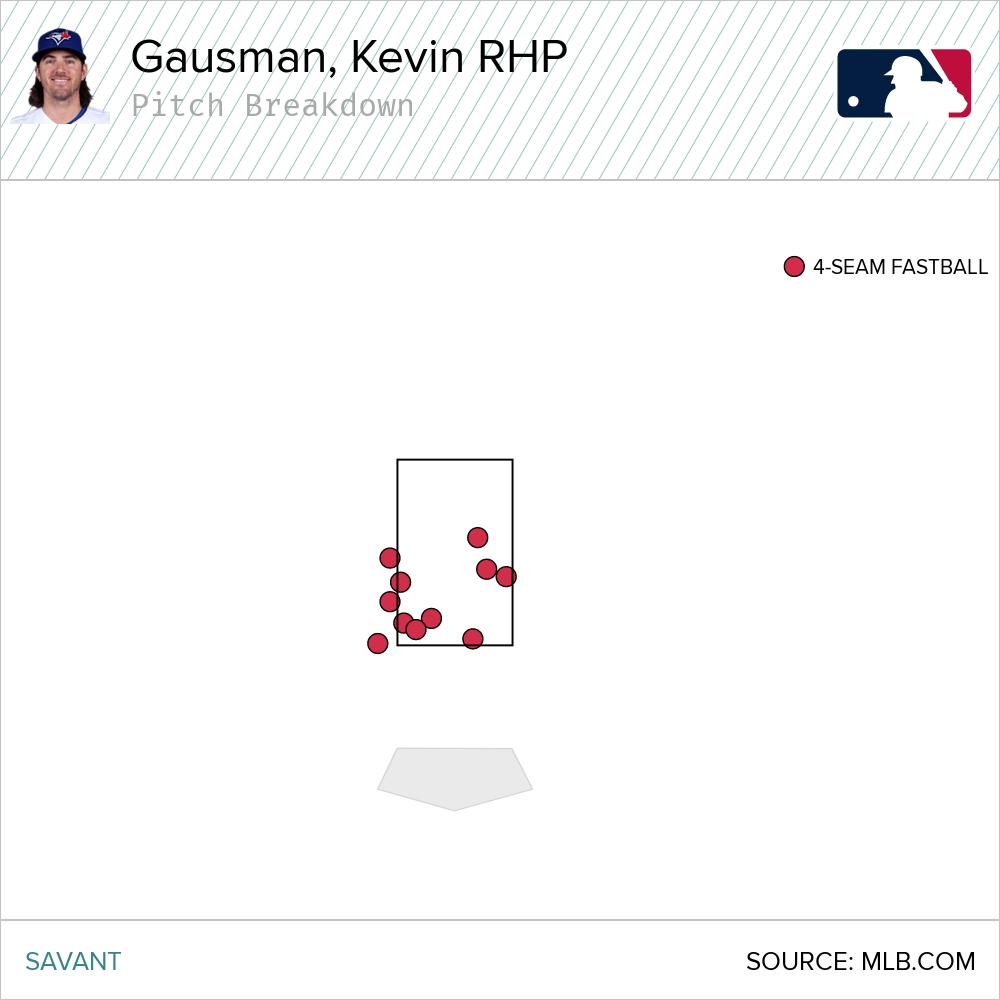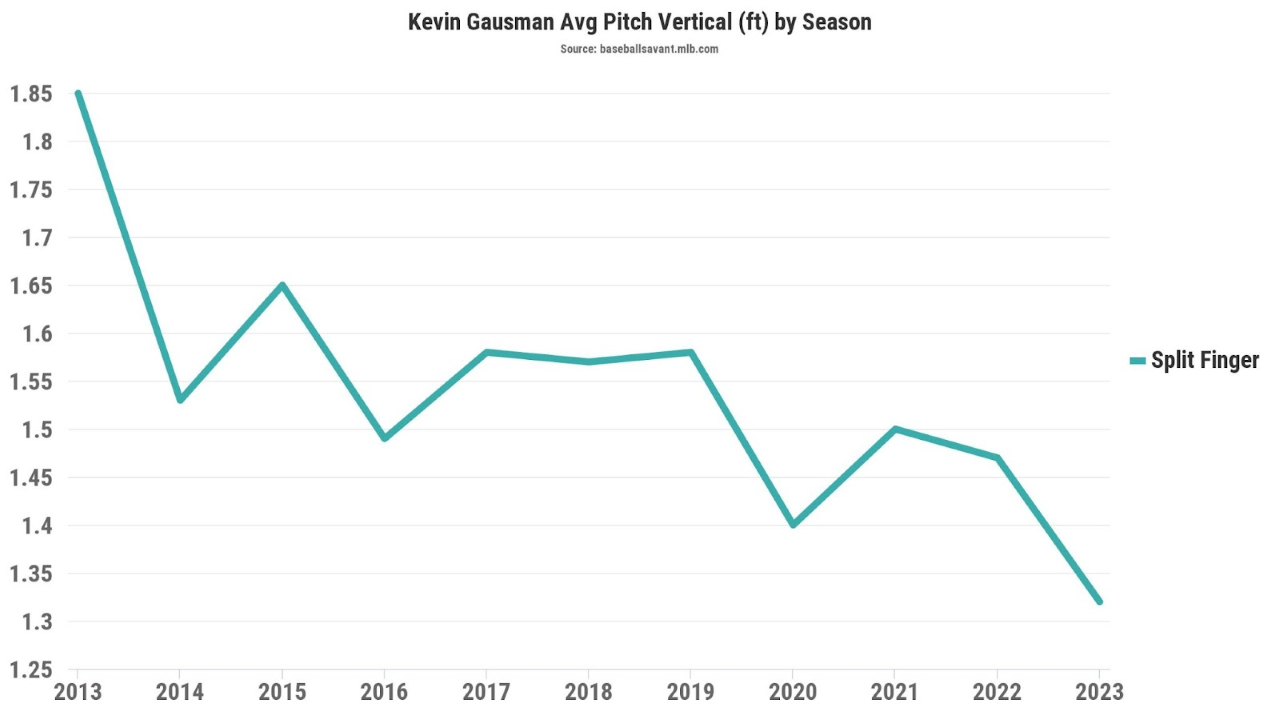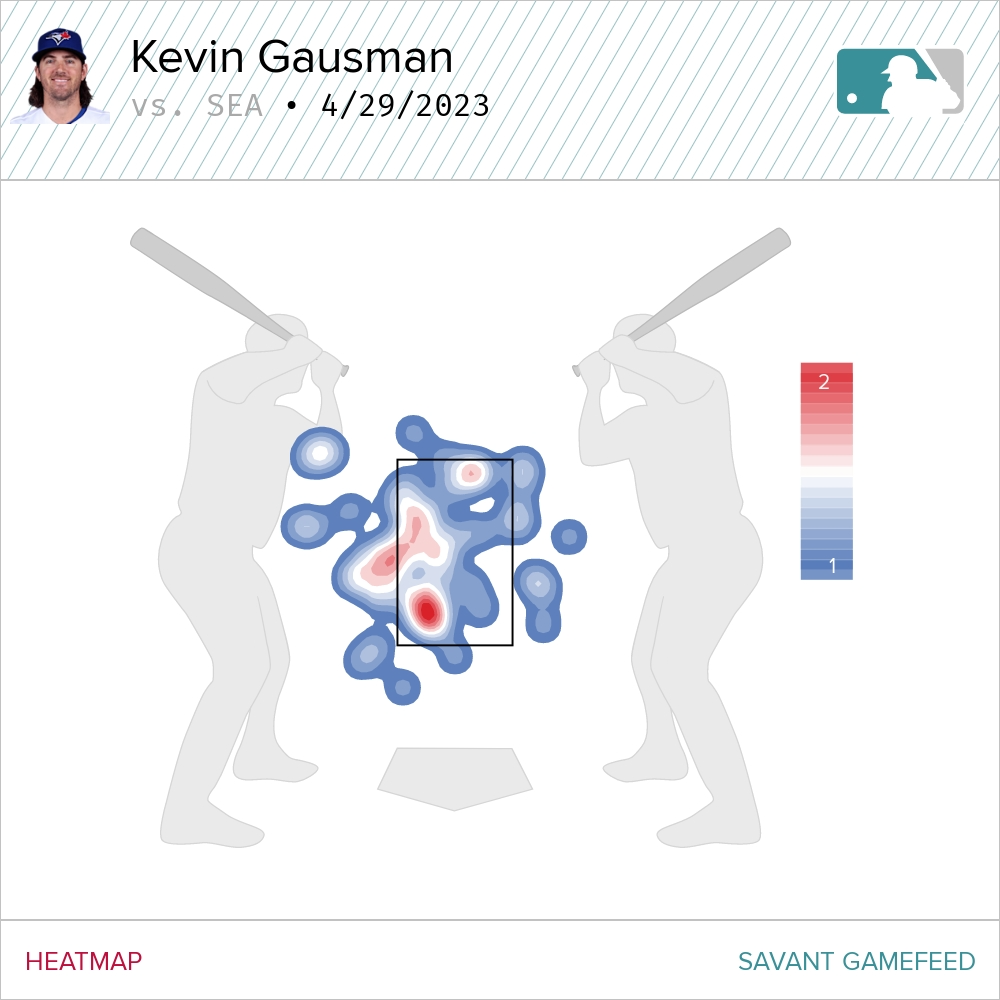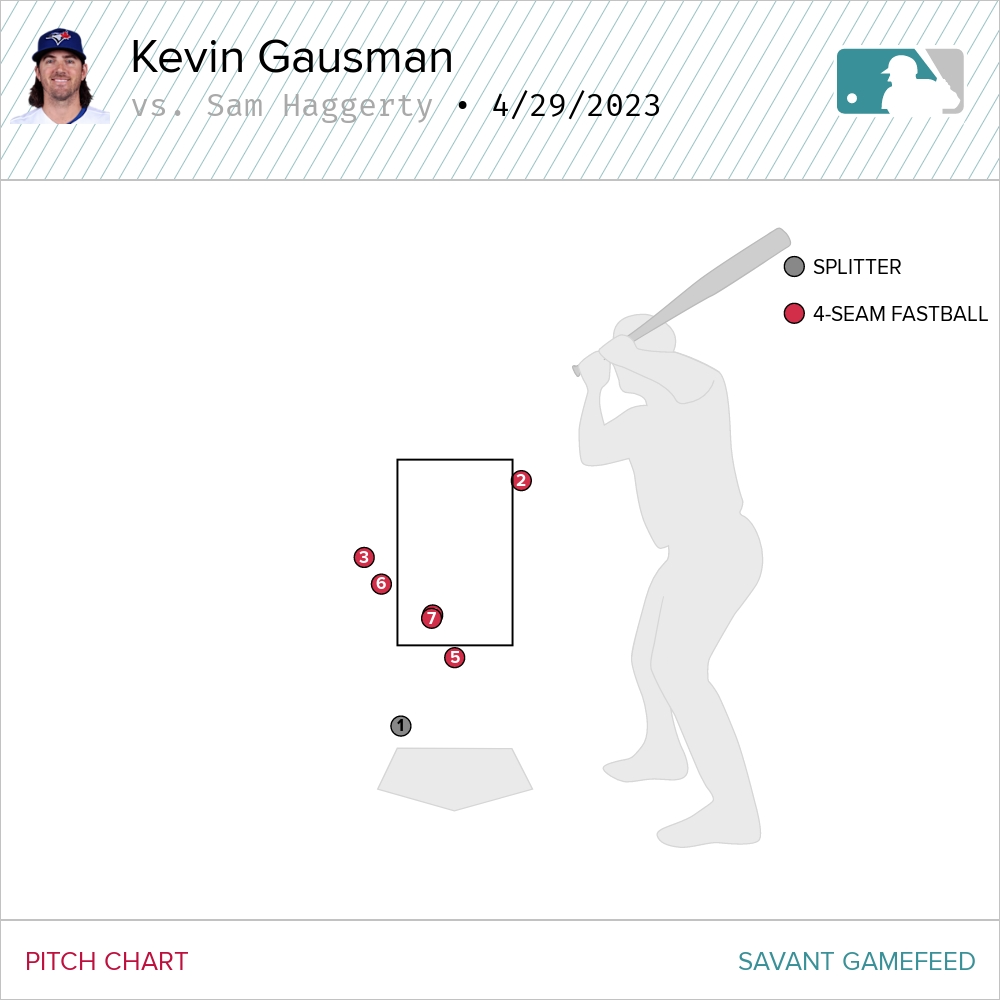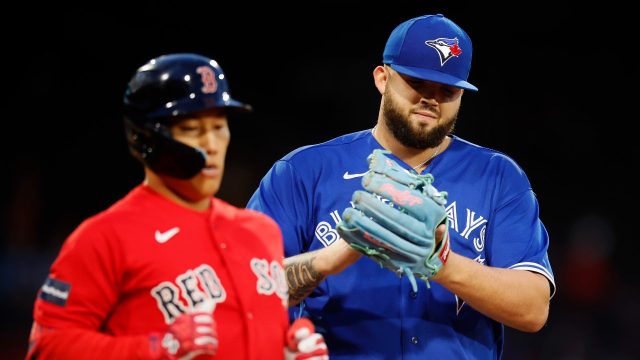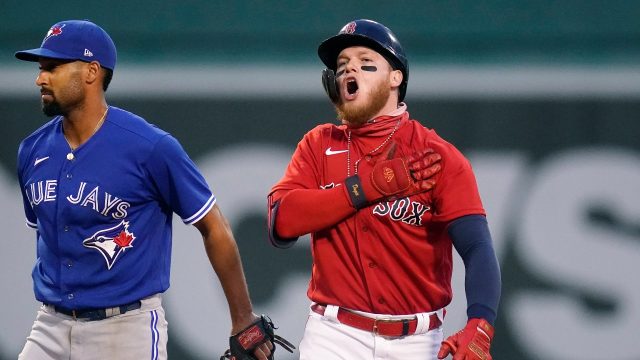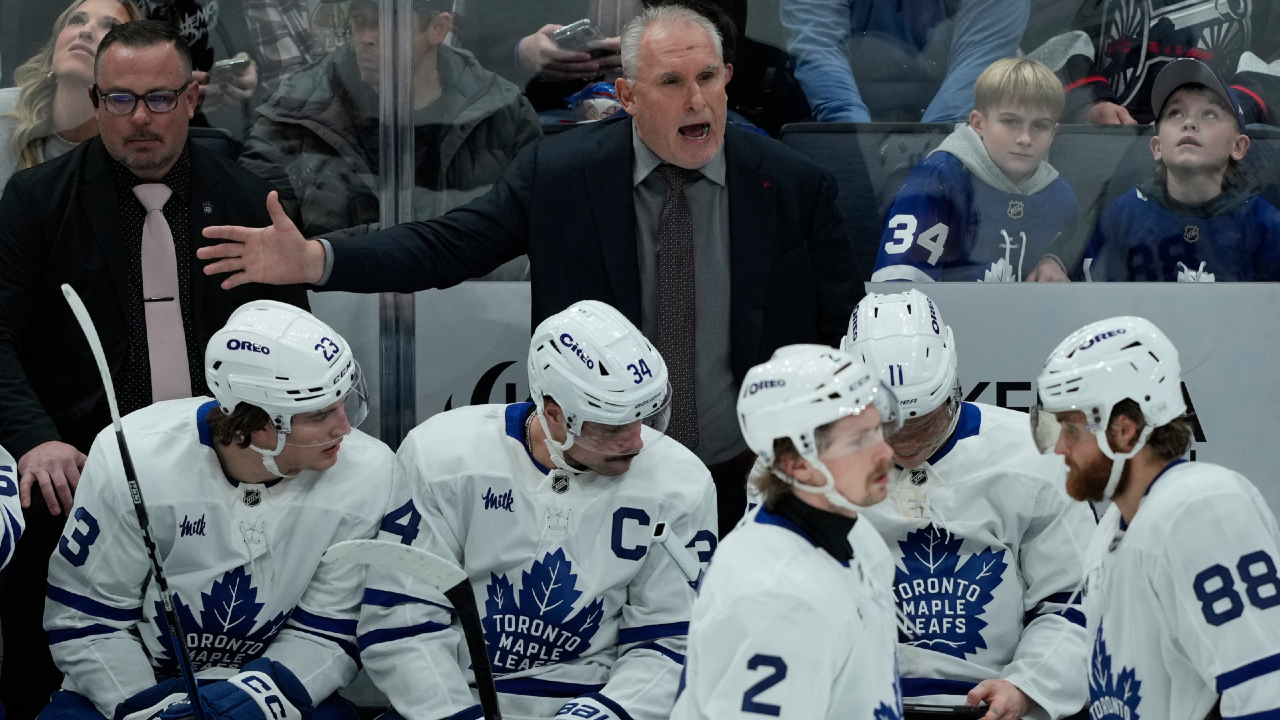
In recent years Kevin Gausman’s primary plan of attack has been straightforward.
Fastballs up. Splitters down.
While that’s an oversimplification, it’s the basic thrust of what the Toronto Blue Jays starter can be expected to do in any given outing.
He’ll mix a slider in there from time to time, and possesses a changeup thrown without the split grip — but attacking the top of the zone with the heater and the bottom with his signature splitter is what makes him successful.
While the Chris Bassitts of the world assemble deep repertoires and orchestrate confounding pitch sequences Gausman plays the hits.
The right-hander’s velocity is good enough to pour in fastballs high, and that pitch tunnels well with splitters below the zone — meaning that hitters can get easily caught between the two pitches.
Gausman is using this combo as his bread and butter in 2023 once again, but despite the fact his pitch mix is more or less the same this year, he’s made a little tweak. Instead of living up high with his heater, he’s throwing it low more often.
Here’s the percentage of his fastballs that were in the top third of the zone above compared to the bottom third or below over the past two seasons:
|
Season |
Upper third or above |
Bottom third or below |
Difference |
|
2022 |
40.1% |
29.4% |
10.7% |
|
2023 |
38.2% |
33.9% |
4.3% |
While this isn’t a radical change, it’s clear that throwing four-seamers down has become more of a priority for Gausman.
That seems counterintuitive because low fastballs don’t generate as many whiffs and when Gausman targets the bottom third of the zone the pitch is no longer as easily mistaken for his splitter in its most effective location — just below the knees.
Another overlay from the incomparable Pitching Ninja provides a little insight on that.
When Gausman throws the fastball low he’s tunneling it with a different kind of splitter — the one he absolutely buries.
This creates an interesting swing-decision dilemma for hitters. Gausman’s opponents are conditioned to lay off anything that seems low, because chances are it’s a splitter that’s going to fall out of the zone.
That leaves them susceptible to getting frozen by the low fastball. This season, they’ve swung at pitch far less frequently the lower it is.
Gausman has 11 called strikeouts this season, and they’ve all come via the heater in the middle third or below:
That may not seem like a big number, but Gausman has never exceeded 32 looking strikeouts in a season, so he’s well on his way to breaking new ground.
If hitters get wise to the veteran’s low heaters and start to get the bats going against pitches that seem to be coming in low, they open themselves up to waving at splitters in the dirt.
That may be a factor in Gausman throwing his splitter lower than ever this year.
Gausman’s last start on April 29 showcased just how dynamic he can be when he’s featuring the low fastball. This is where he placed his heaters on Saturday:
His fifth-inning battle with Sam Haggerty was the perfect example of a hitter’s reluctance to swing at his low fastball, even if he’s been throwing it consistently.
After missing with a splitter down and a heater up-and-in, Gausman threw Haggerty five consecutive fastballs no higher than the middle of the plate.
He looked at four out of five of them — and proceeded to let a 3-2 pitch that was clearly a strike go right by him.
In other cases, Seattle Mariners hitters clued into the low fastball, like Eugenio Suarez who gave this 97.2 mph pitch a good rip:
On the very next pitch, Gausman went to a splitter way below the plate that may have looked like a low fastball to Suarez on the way in. The Mariners slugger — who has a chase rate that’s in the 77th percentile — made an ugly check swing at the kind of pitch he rarely struggles to lay off, and shouted an expletive on his way back to the dugout.
Gausman has elicited nine swinging strikes on pitches Statcast categorizes as blocked by the catcher this season. It’s probably not a coincidence that he got those in a game where Seattle’s lineup had to worry about the right-hander stealing strikes at the bottom of the zone with his fastball.
Nothing is changing with the 32-year-old on a fundamental level. He’s still a guy who’s as easy to understand as he is hard to hit. This year it seems like he’s tinkering with his formula the tiniest bit without needing to discover a new pitch, grip, arm angle, or release point.
Gausman is just taking something that works incredibly well, and expanding on it by using a slightly different iteration more frequently. He was already a headache for hitters to deal with, but now they’ve got a little bit more to think about.


